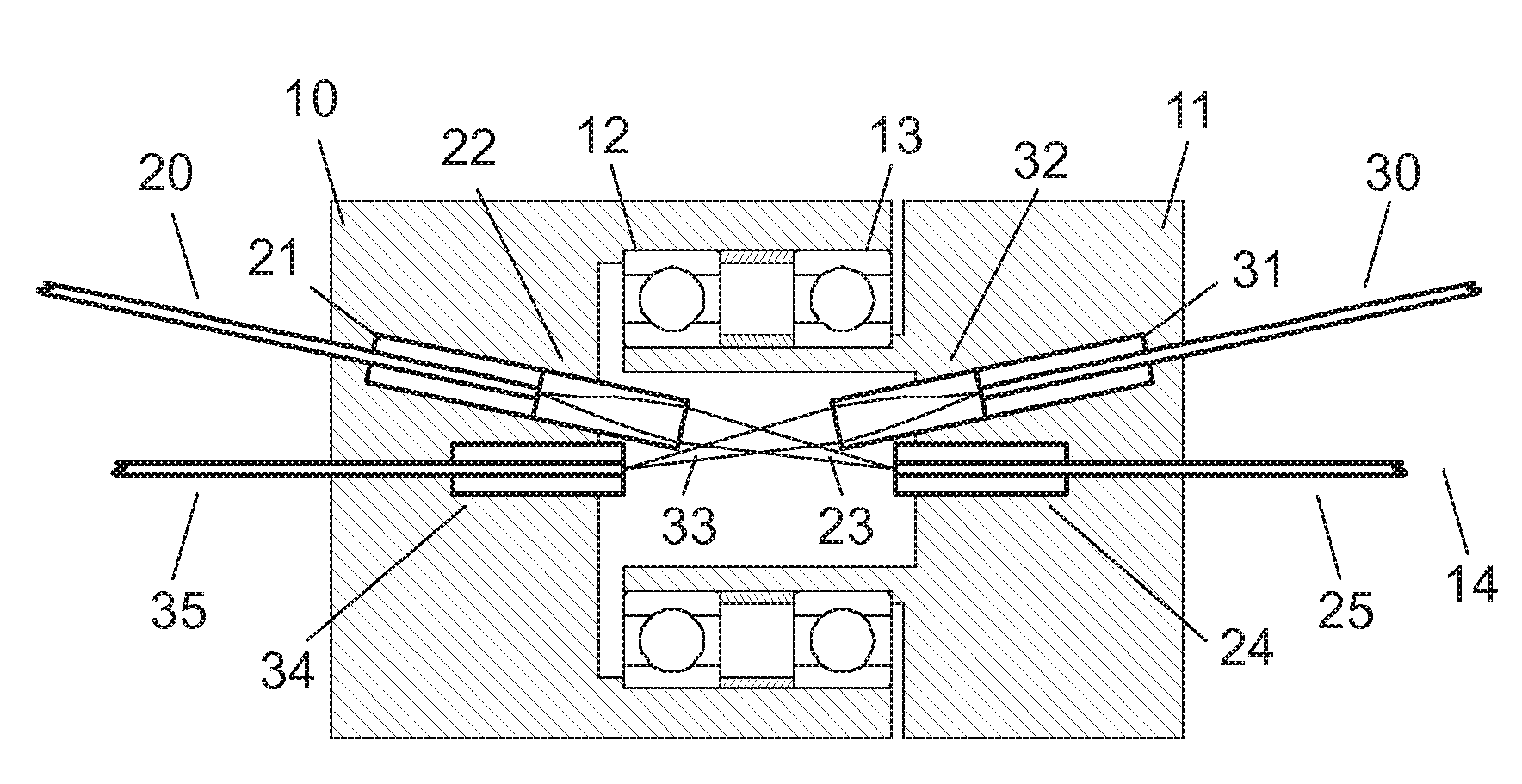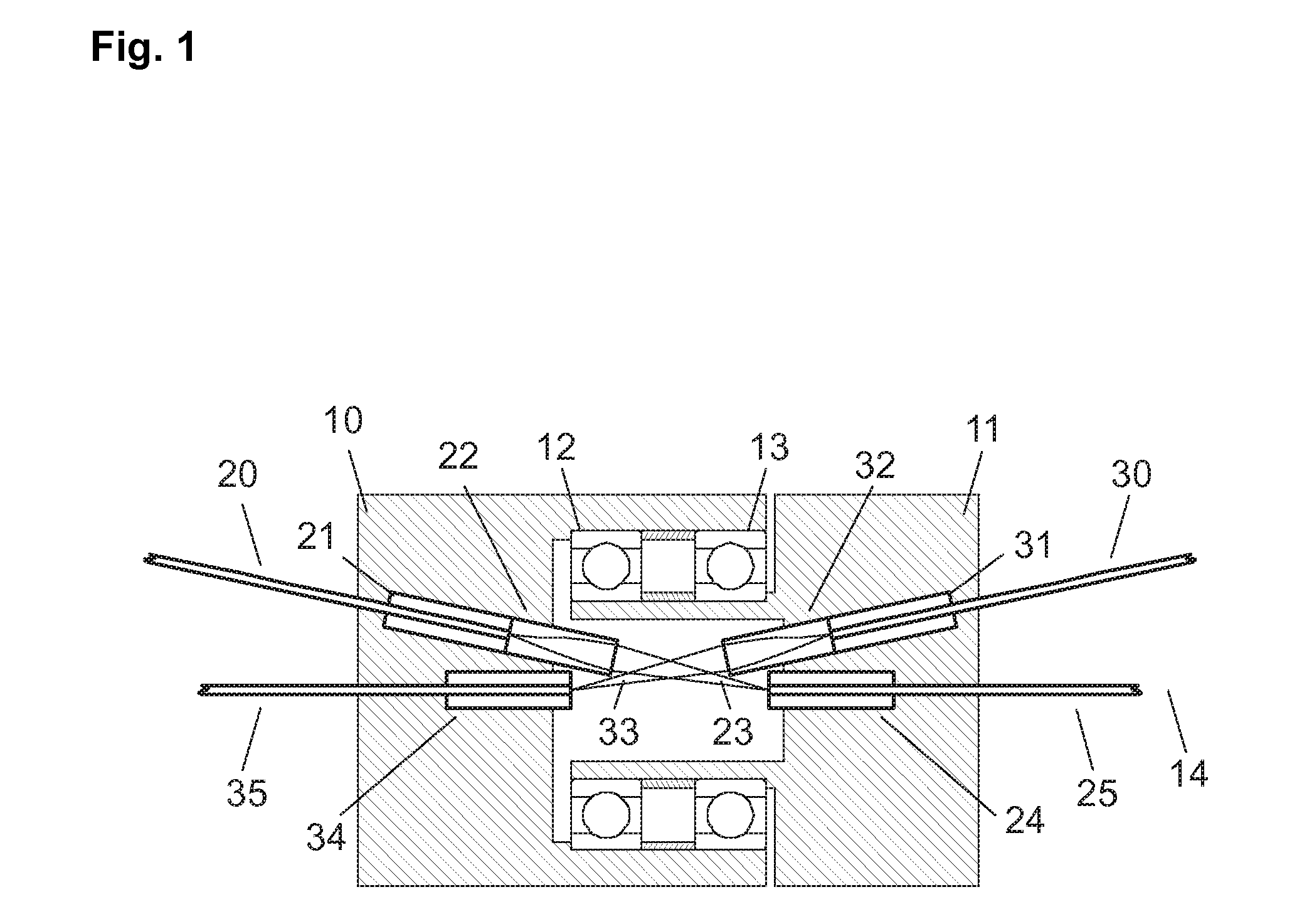Two-Channel Multimode Rotary Joint
a rotary joint, multi-mode technology, applied in the direction of optics, instruments, optical light guides, etc., can solve the problems of high cost of elaborate mechanical arrangement, device cannot be constructed to have rotational symmetry, and optical joints of this kind of no interest for many applications, etc., to achieve low transmission loss
- Summary
- Abstract
- Description
- Claims
- Application Information
AI Technical Summary
Benefits of technology
Problems solved by technology
Method used
Image
Examples
Embodiment Construction
[0014]The device according to the invention comprises a first housing part 10 and also a second housing part 11 which are connected together to be rotatable about the rotation axis 14 by means of a bearing unit 12, 13. The first optical path comprises a first light-waveguide 20 on the first housing part 10 for supplying light, which is accommodated in the first ferrule 21. At the end of the light-waveguide there is provided a first focuser 22 for focusing the light 23 emitted by the light-waveguide onto the second light-waveguide 25. The light-waveguide 25 on the second housing part 11 is itself accommodated in a ferrule 24. The second light path extending in the opposite direction comprises a third light-waveguide 30 on the second housing part 11 for supplying light, the third light-waveguide being accommodated in the ferrule 31. At the end of the third light-waveguide there is provided a second focuser 32 for focusing the light 33 emitted by the light-waveguide onto the fourth lig...
PUM
 Login to View More
Login to View More Abstract
Description
Claims
Application Information
 Login to View More
Login to View More - R&D
- Intellectual Property
- Life Sciences
- Materials
- Tech Scout
- Unparalleled Data Quality
- Higher Quality Content
- 60% Fewer Hallucinations
Browse by: Latest US Patents, China's latest patents, Technical Efficacy Thesaurus, Application Domain, Technology Topic, Popular Technical Reports.
© 2025 PatSnap. All rights reserved.Legal|Privacy policy|Modern Slavery Act Transparency Statement|Sitemap|About US| Contact US: help@patsnap.com


